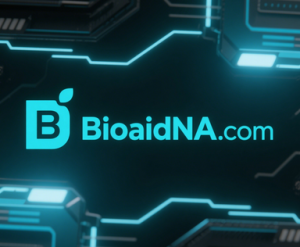BioAidna: Definition and Hypothetical Analysis
BioAidna is a portmanteau combining Bio (biology) and Aidna, which lacks a widely recognized definition in public literature. Based on linguistic structure and trends in biotechnology, it may represent an emerging concept or tool in synthetic biology, AI-driven bioengineering, or DNA-related innovations. Below is a speculative breakdown of its potential meanings and applications:
I. Hypothetical Definitions

- Bio-AI-DNA Integration:
- A convergence of artificial intelligence (AI) and DNA technologies to optimize genetic design, diagnostics, or data analysis.
- Example: AI algorithms predicting CRISPR guide RNA efficiency for gene editing.
- Aidna as an Acronym:
- Artificial Intelligence-Driven Nucleic Acid (AIDNA): A platform or tool leveraging AI to design, simulate, or synthesize nucleic acids (DNA/RNA) for therapeutics or biomanufacturing.
- Specialized Biotech Tool:
- A proprietary software or database for genomic analysis, synthetic pathway optimization, or personalized medicine.
II. Potential Applications
- Precision Medicine:
- AI-guided design of DNA-based therapies (e.g., mRNA vaccines, gene editing) tailored to individual genetic profiles.
- Sustainable Biomanufacturing:
- Engineered microbes with AI-optimized metabolic pathways to produce biofuels, enzymes, or biodegradable plastics.
- Diagnostic Innovations:
- Portable DNA sequencers integrated with AI for real-time pathogen detection (e.g., rapid COVID-19 variant tracking).
III. Industry Case Studies
- CRISPR-AI Synergy:
- Companies like Inscripta use AI to automate genome editing, akin to a hypothetical BioAidna platform.
- DNA Data Storage:
- Startups like Catalog encode digital data into synthetic DNA, a field where AI could enhance encoding/decoding efficiency.
- Therapeutic RNA Design:
- Moderna and BioNTech employ computational tools to optimize mRNA sequences, aligning with BioAidna’s potential scope.
IV. Challenges and Future Directions
- Technical Hurdles:
- Data Privacy: Managing sensitive genetic information in AI systems.
- Accuracy: Ensuring AI predictions align with wet-lab experimental outcomes.
- Innovation Opportunities:
- Quantum Biology: Merging AI with quantum computing to model DNA-protein interactions.
- Ethical AI Frameworks: Developing guidelines for responsible use of AI in genetic engineering.
Conclusion
While BioAidna remains undefined in mainstream science, its conceptual foundation—bridging AI and biotechnology—holds significant potential. It could represent next-gen tools for healthcare, sustainability, or data science, positioning it at the forefront of the bio-digital revolution.
If you are interested in purchasing this domain, please contact: chuanchuan810@gmail.com





